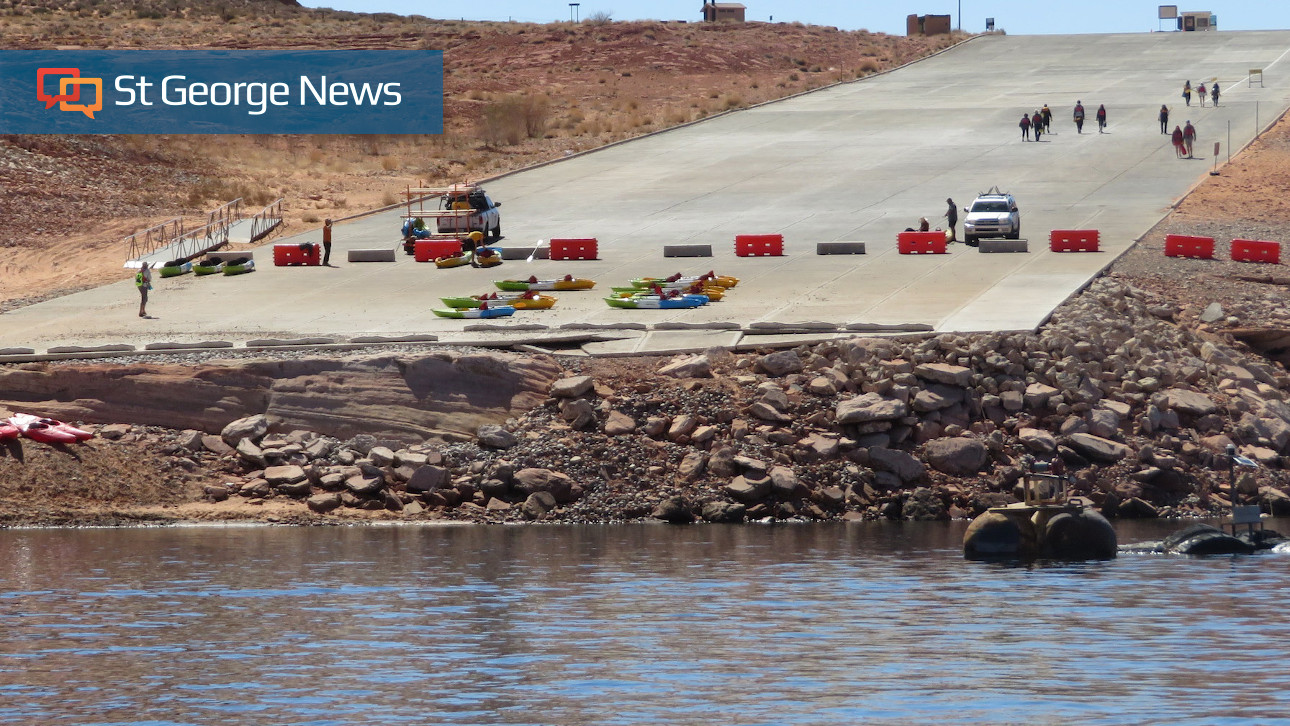ST. GEORGE — Though recent monsoonal storms have brought damaging floods to parts of southwest Utah, state and local water officials say the rains also came with some benefit to the region. However, these same officials are also quick to state that rains were nowhere near the amount needed to help counter the increasing impacts of what is still an ongoing drought.

“They were really phenomenal storms,” Zach Renstrom, general manager of the Washington County Water Conservancy District, told St. George News in reference to the rainfall.
The storms resulted in flooding in Springdale, Enterprise and most recently Cedar City. These areas saw minor to major flooding that has left people displaced from their homes and businesses damaged.
Many residents in these communities have since rallied together to help those impacted and clean up to debris left behind by the flooding, and as flooding seems to be water wasted as opposed to slow rains that soak in, it would be easy to consider these storms as having no benefit whatsoever to the drought-stricken region. But officials say they do.
When these types of storms hit the region, the Washington County Water Conservancy District sees the demand on residential water use decrease “quite significantly,” Renstrom said. This happens during the storms and for several days afterward as people turn off their sprinklers and keep outdoor watering to a minimum for a time.
“We treat less water, and people use less water,” he said. “We get a lot of water savings from lack of demand.”
The reduced demand on the county’s culinary-standard water – the treated water that is safe to drink, as opposed to secondary water used on city and county facilities – helps prolong the county’s water storage. Conserving as much water as possible has become a key goal across Utah, as water storage in reservoirs is gradually depleted due to consistent demand.
According to a report from the Utah Department of Natural Resources, as of this week, statewide reservoir storage continues to drop and now averages 55%, which is down from 56% reported the week prior. Thirty of Utah’s largest 42 reservoirs are below 55% of available capacity, including the Lower Enterprise Reservoir.

Overall water storage is also estimated to be lower than it was this time last year.
When asked if floodwater from the monsoonal storms is able to be captured and used to refill area reservoirs, water officials says that isn’t possible due to the water being mixed with mud and debris.
“Most of that water is too dirty to use,” Jessica Staheli, of the Central Iron County Water Conservancy District, told St. George News. “Farmers really can’t use it either.”
Renstrom said attempting to filter the flood waters would only serve to clog the preexisting water system and be a costly fix.
The debris-filled flood water also aggravates overall flooding in development areas due to it overwhelming and clogging local storm drain systems. This lent to some of the flooding in Enterprise last week.
Despite the flooding, the storms did bring much-needed moisture to the region’s dry soils. Earlier this year, there was less run off from melting snowpack from the mountains due to dried-out soils absorbing the water before it reached the rivers and streams used to refills the state’s reservoirs.
According to the Utah Department of Natural Resources, 95% of Utah’s water comes from snowpack, so the ability of melting snowpack to reach the areas where it will do some good is considered critical by state and local water officials.

“Over the last couple of years – especially last year – our soil moistures have just been phenomenally low,” Renstrom said. “What these storms are doing is putting moisture in those soils so when we do end up getting snowfall this winter, that snow will make it into the creeks.”
The Utah Department of Natural Resources weekly drought report states that the rainfall brought a significant increase to soil moisture levels around Utah. It is 0.2 inches above average for the first time this water year.
However, to see a restoration of “average” rainfall for the year, Utah needs an additional 13.5 inches of rain: 9 inches to cancel the deficit and 4.5 inches to account for the precipitation traditionally accumulated from late July through September.
The report further states the following:
To get streams running at healthy levels while filling reservoirs, Utah needs late summer and early fall storms to return soil moisture levels to normal, which will help snowpack runoff make it to streams and reservoirs rather than get absorbed by dry soils. The state also needs an above-average snowpack to refill reservoirs.
As severe drought conditions continue throughout Utah, state and local officials continue to stress the need for water conservation effort across the board.
Water conservation tips and programs can be found at the following Utah websites:
- SlowTheFlow
- Washington County Water Conservancy District
- Central Iron County Water Conservancy District
- Utah Water Savers
Copyright St. George News, SaintGeorgeUtah.com LLC, 2021, all rights reserved.